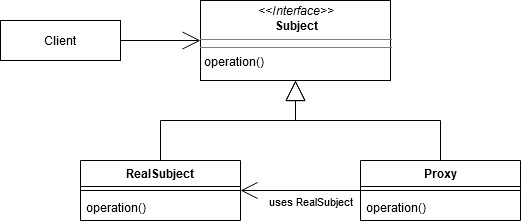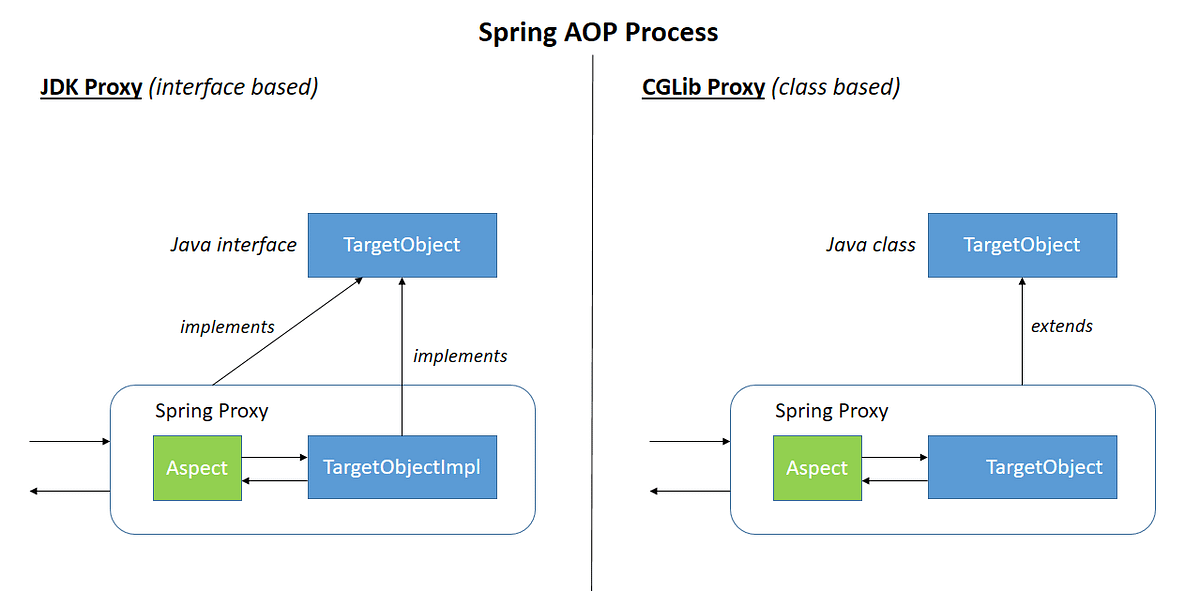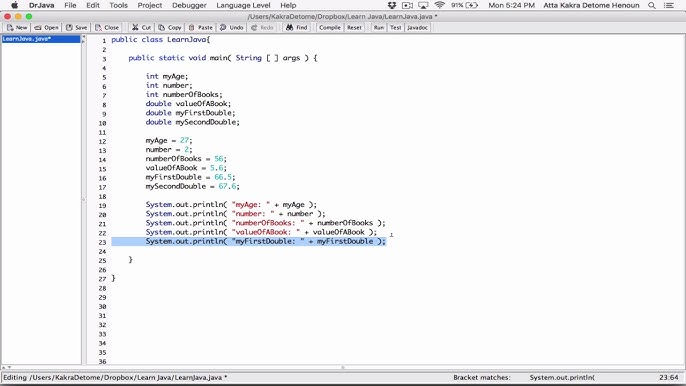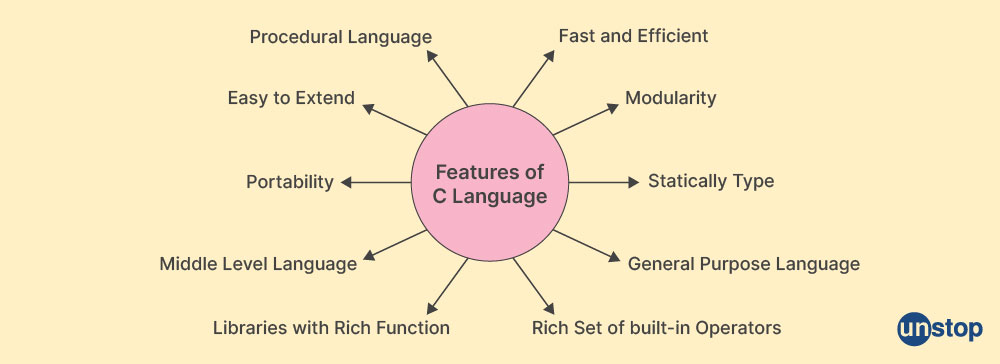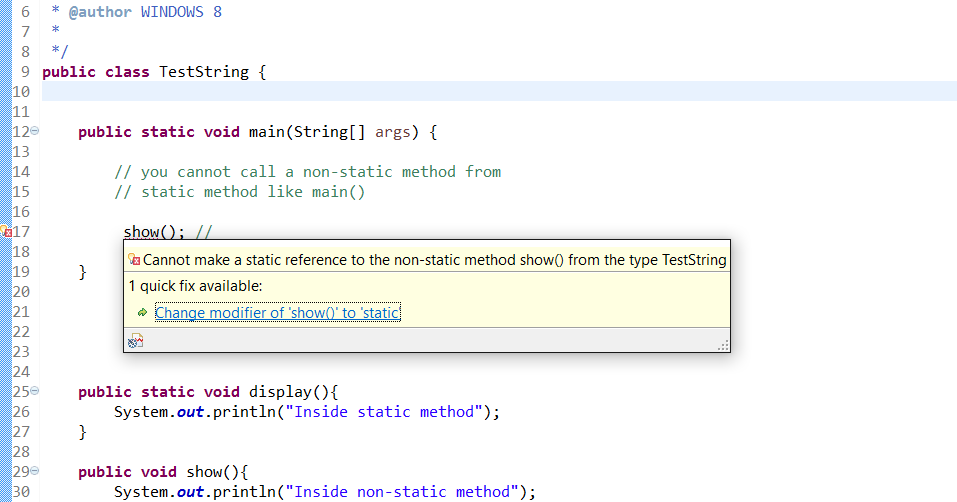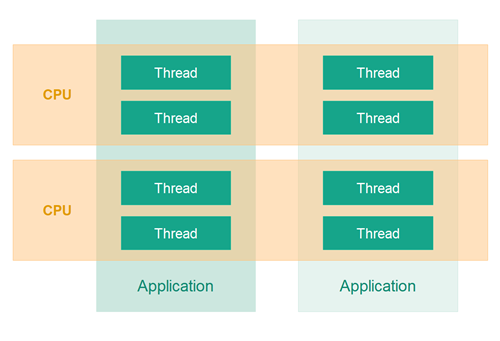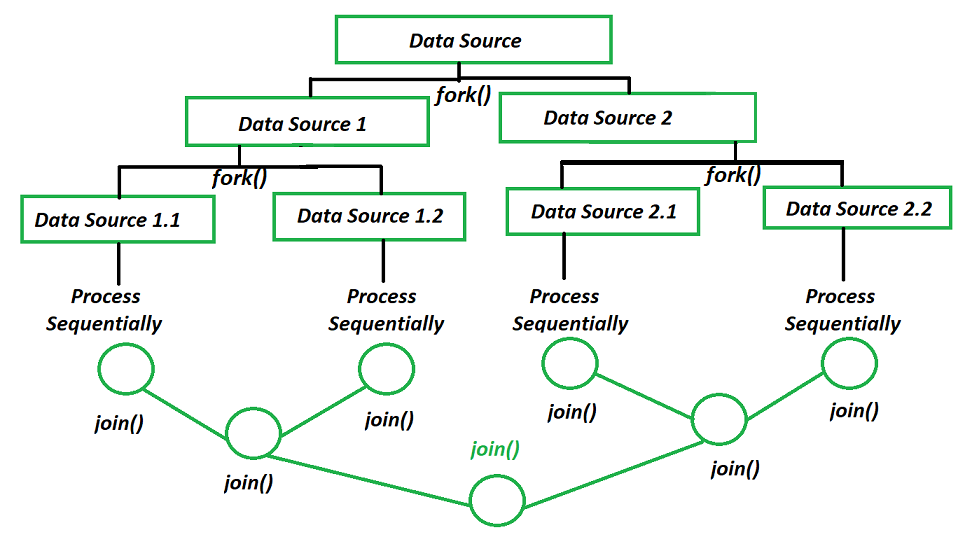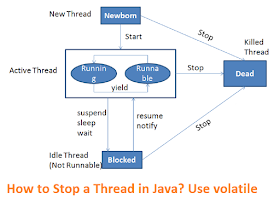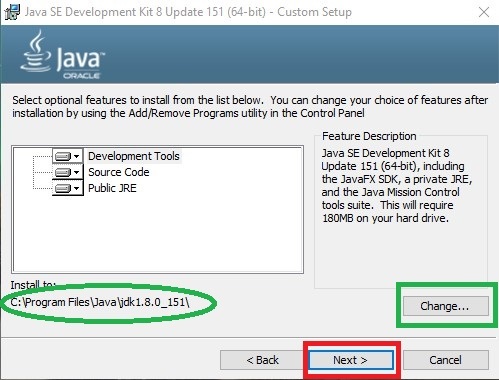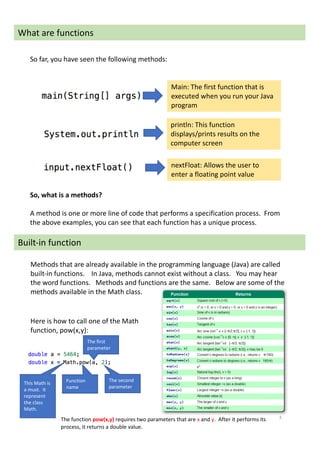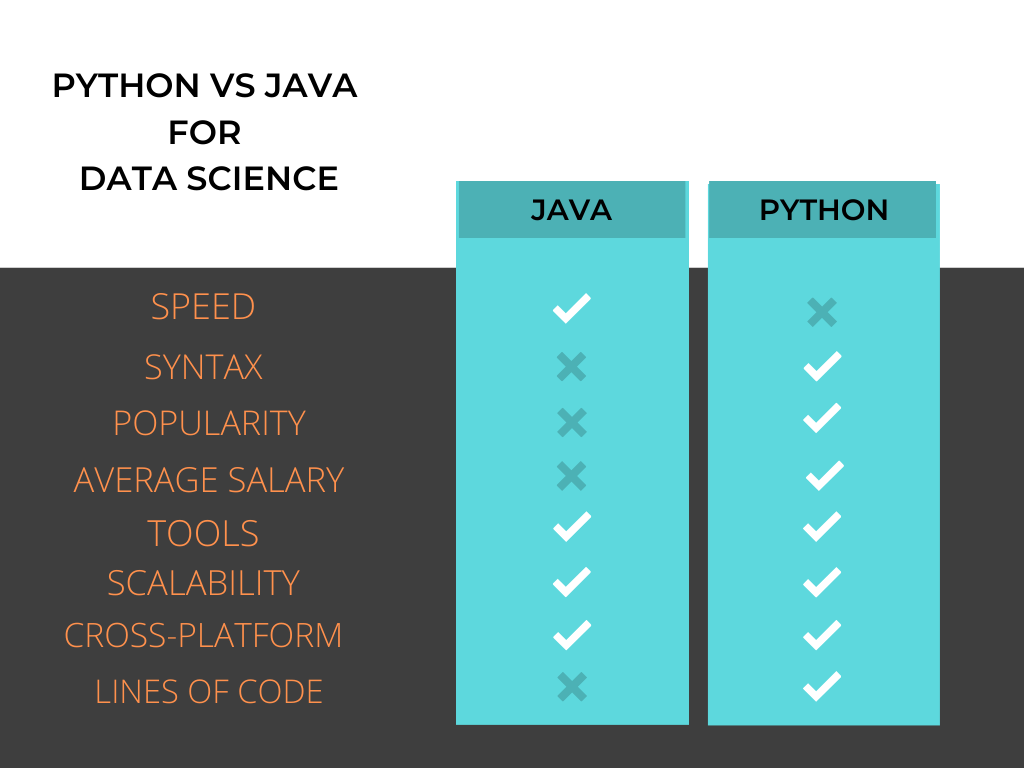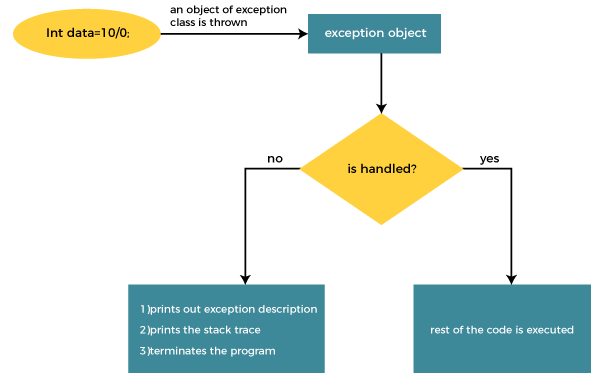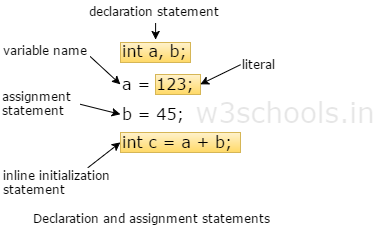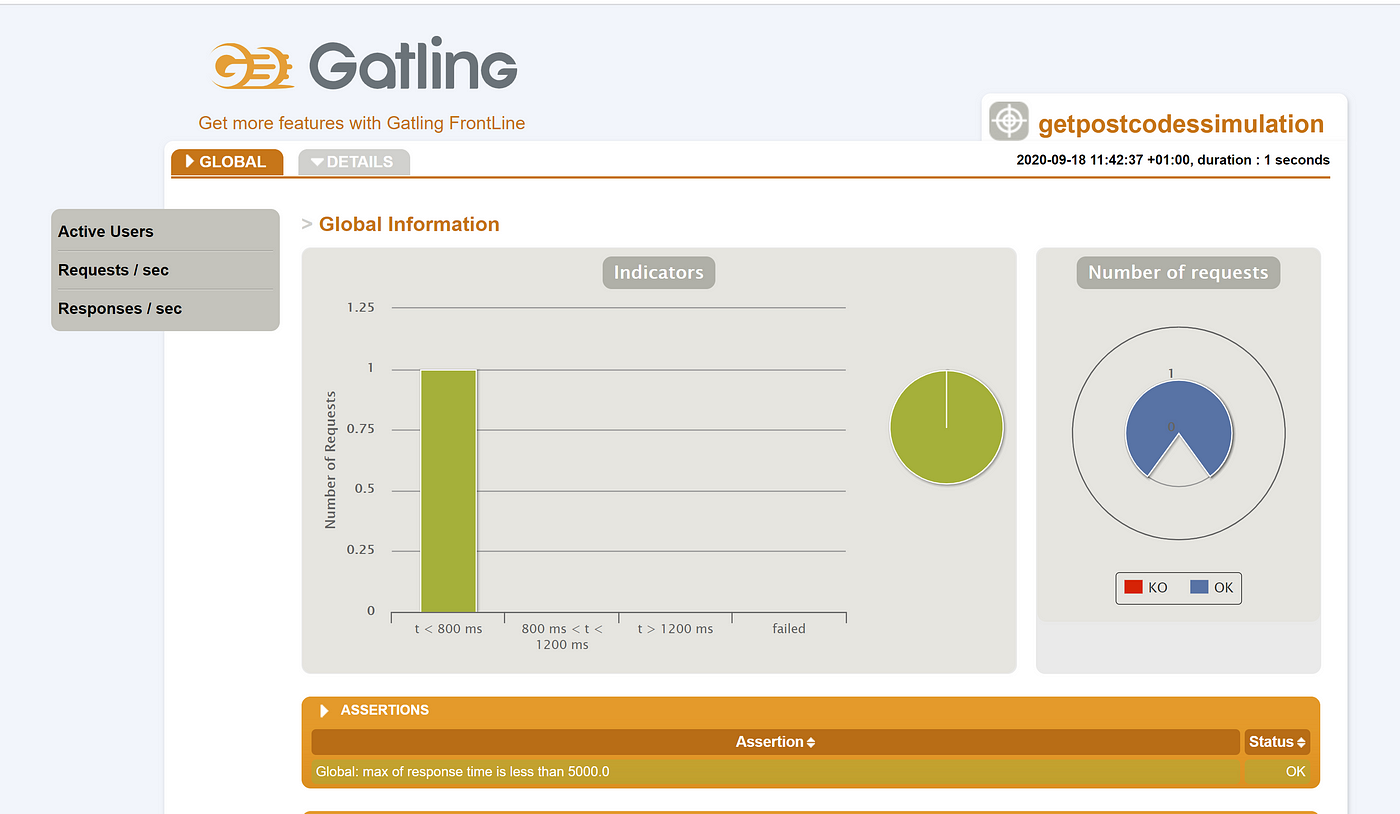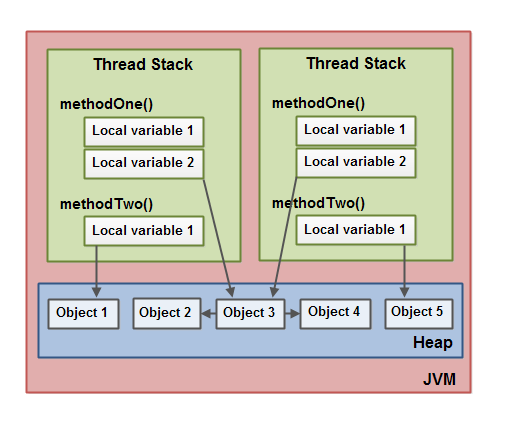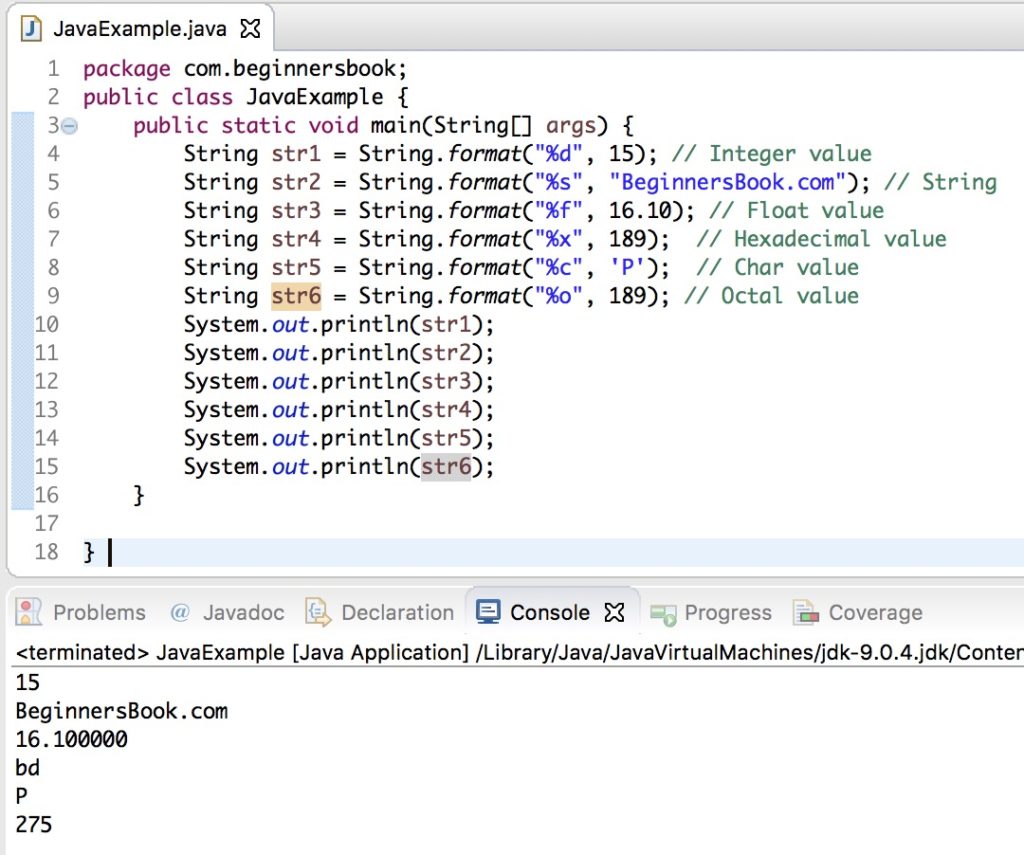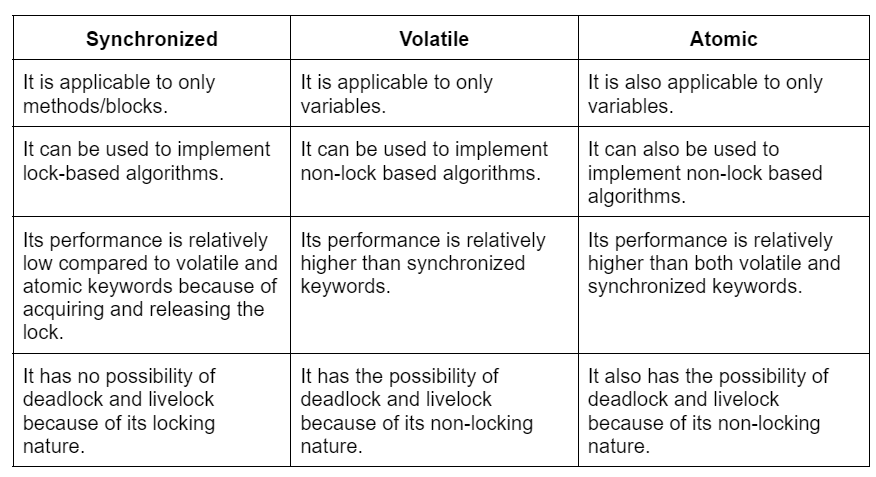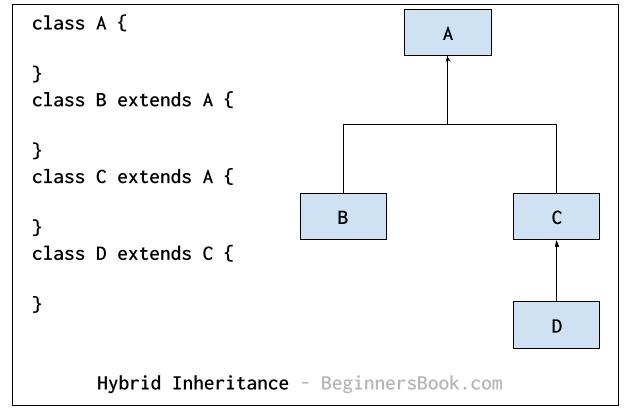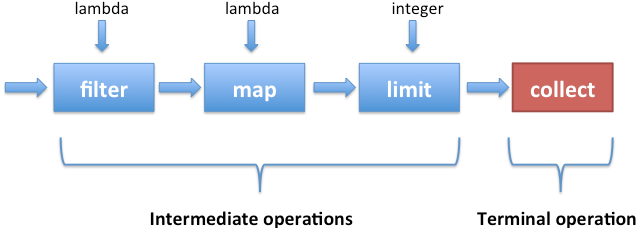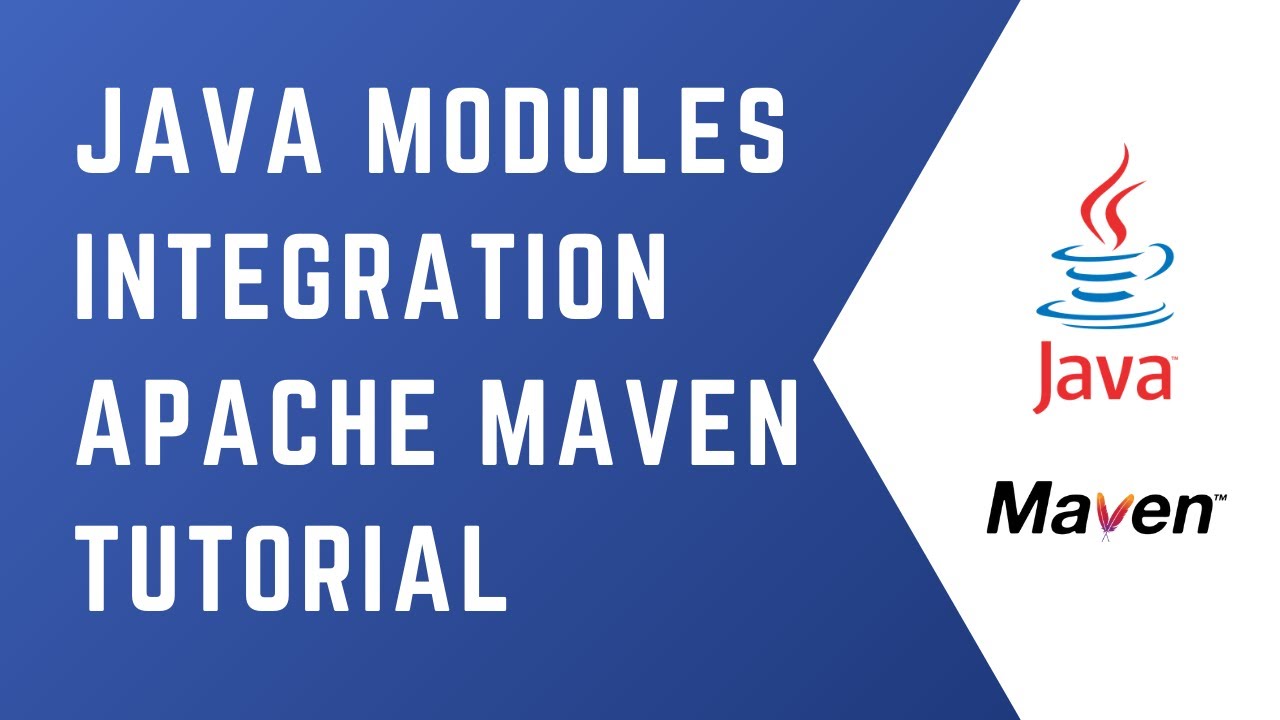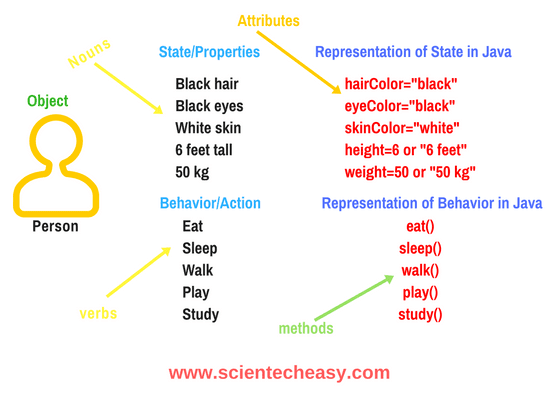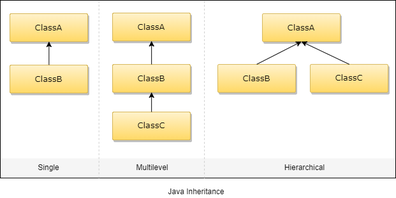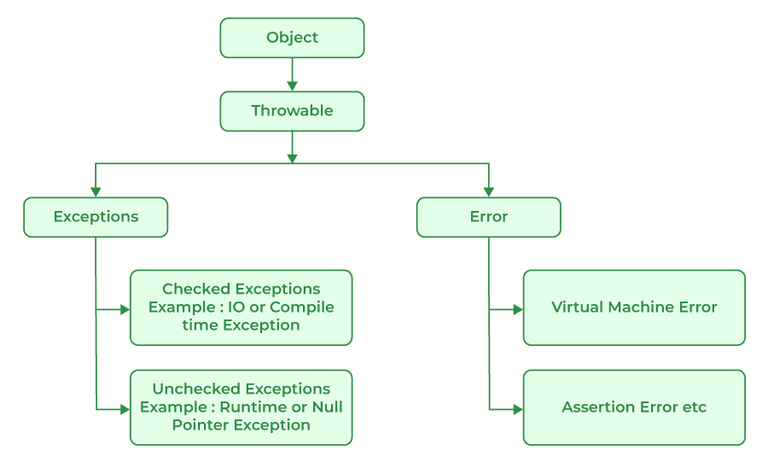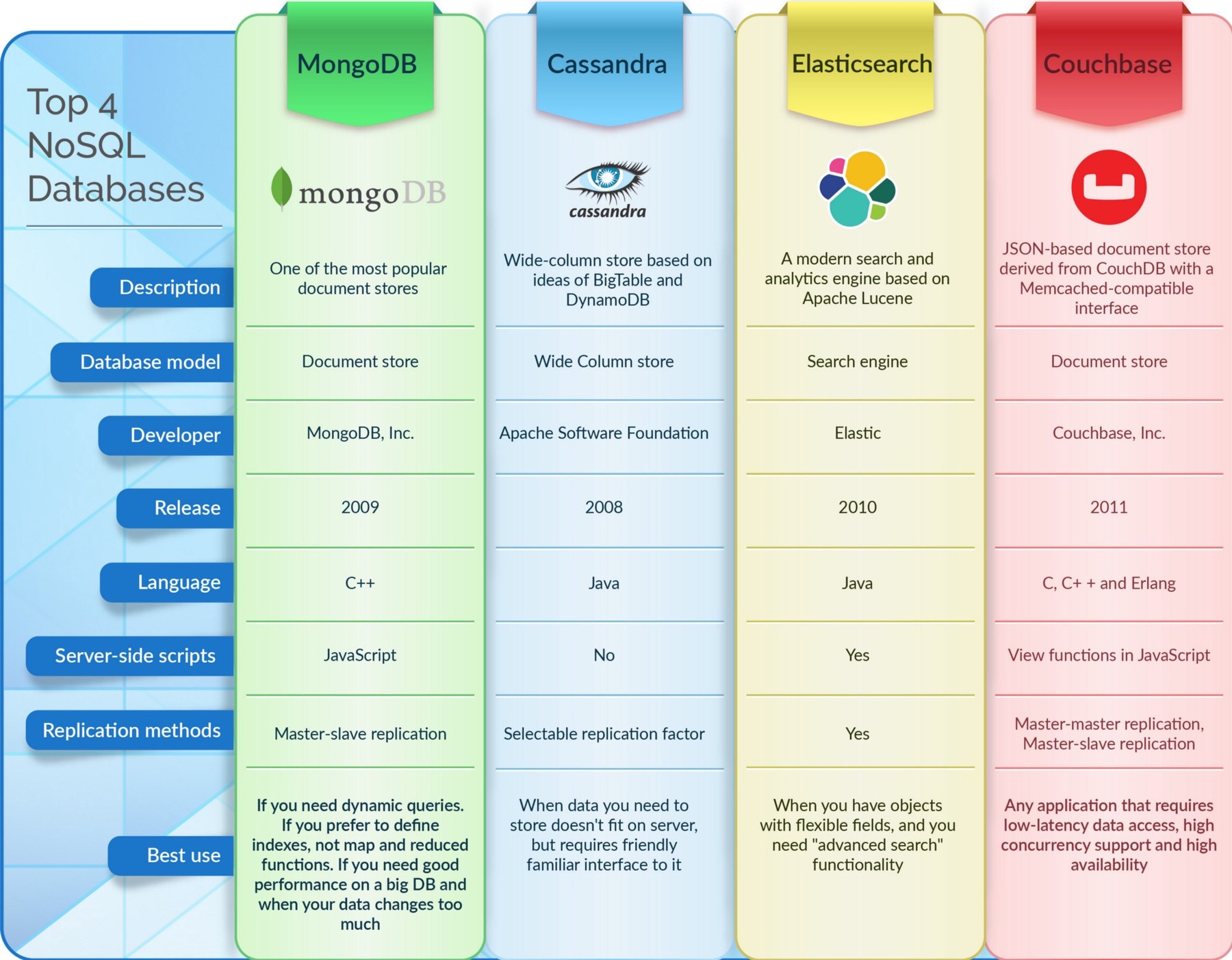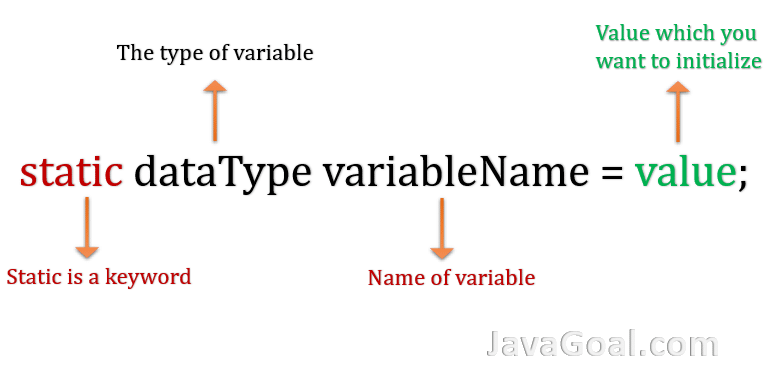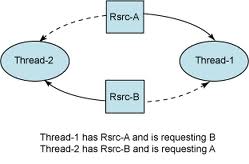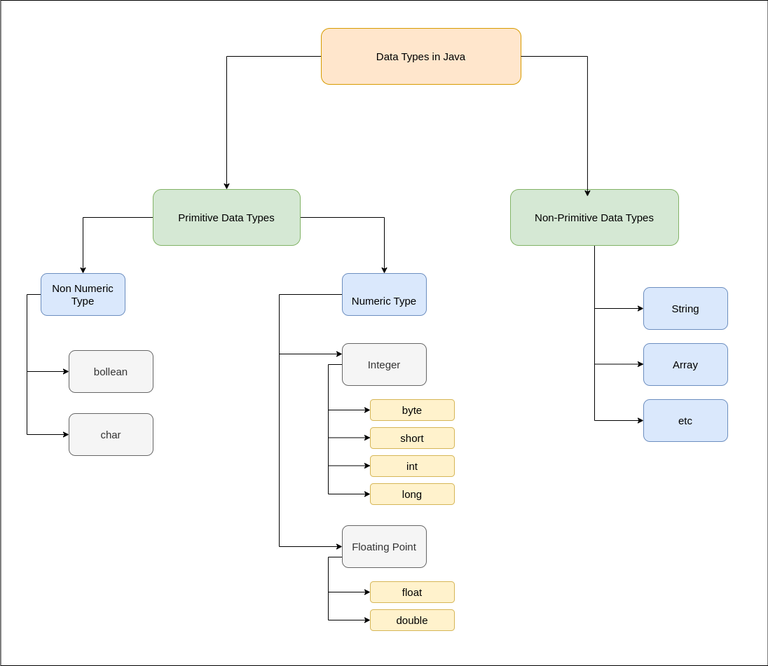How does a Java dynamic proxy work?
How does a Java dynamic proxy work?
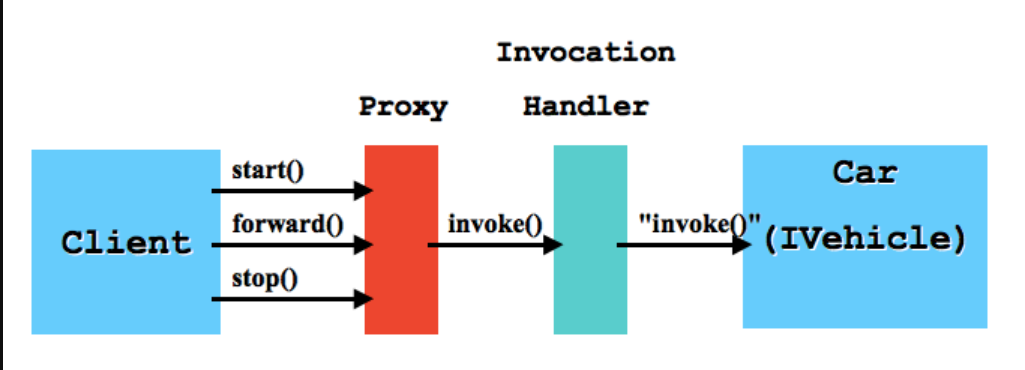
A Java dynamic proxy is a mechanism that allows you to create a proxy object at runtime, rather than at compile-time. This means that the proxy can be created and configured dynamically, without requiring any changes to the original class or its code.
In Java, there are two types of proxies: static proxies and dynamic proxies. Static proxies are created at compile-time using the java.lang.reflect.Proxy class, while dynamic proxies are created at runtime using the java.lang.reflect.InvocationHandler interface.

A dynamic proxy works by implementing the InvocationHandler interface, which requires you to implement a single method called invoke. This method takes an invocation request object as its argument, and returns an invocation result object. The invocation request object contains information about the method being invoked on the target object, such as the method name, parameters, and return value.
Here's a high-level overview of how dynamic proxies work:
Create anInvocationHandler implementation: This is where you write your own custom logic to handle the invocation requests. You can intercept method calls, modify the behavior of the original method, or even delegate the call to another object. Create a proxy class: Use a tool like ASM (Apache Commons) or JavaAssist to generate a dynamic proxy class that extends java.lang.reflect.Proxy. This class will contain the necessary metadata and bytecode to support the invocation requests. Set up the target object: Provide an instance of the original class (the "target" object) that you want to proxy. This is typically done by calling the constructor or setter methods on the target object.
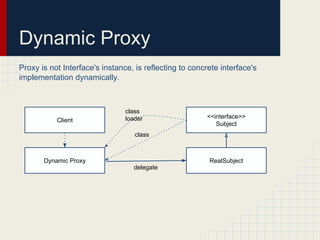
Proxy class to create an instance of the generated proxy class, passing in the invocation handler and target object as arguments. Invoke methods on the proxy: Now you can call methods on the proxy just like you would on the original target object. The proxy will intercept each method invocation and forward it to the invocation handler for processing.
Here's a simple example of how you might use dynamic proxies in Java:
public class HelloWorld {
public void sayHello() {
System.out.println("Hello, World!");
}
}
// InvocationHandler implementation
class GreetingHandler implements InvocationHandler {
private HelloWorld target;
public GreetingHandler(HelloWorld target) {
this.target = target;
}
@Override
public Object invoke(Object proxy, Method method, Object[] args)
throws Throwable {
if (method.getName().equals("sayHello")) {
System.out.println("Before calling the sayHello() method.");
}
return method.invoke(target, args);
}
}
public class DynamicProxyExample {
public static void main(String[] args) {
// Create a target object
HelloWorld target = new HelloWorld();
// Create an invocation handler
InvocationHandler handler = new GreetingHandler(target);
// Create a dynamic proxy instance
HelloWorld proxy = (HelloWorld) Proxy.newProxyInstance(
Thread.currentThread().getContextClassLoader(),
new Class<?>[]{HelloWorld.class},
handler);
// Use the proxy
proxy.sayHello();
}
}
In this example, we create an InvocationHandler implementation that logs a message before calling the sayHello() method on the target object. We then use the Proxy class to create a dynamic proxy instance of the HelloWorld class, passing in our custom invocation handler and target object as arguments. Finally, we call methods on the proxy just like we would on the original target object.
Dynamic proxies are a powerful tool in Java, allowing you to decouple your code from its dependencies, improve flexibility and maintainability, and even implement advanced features like aspect-oriented programming (AOP).
java proxy library
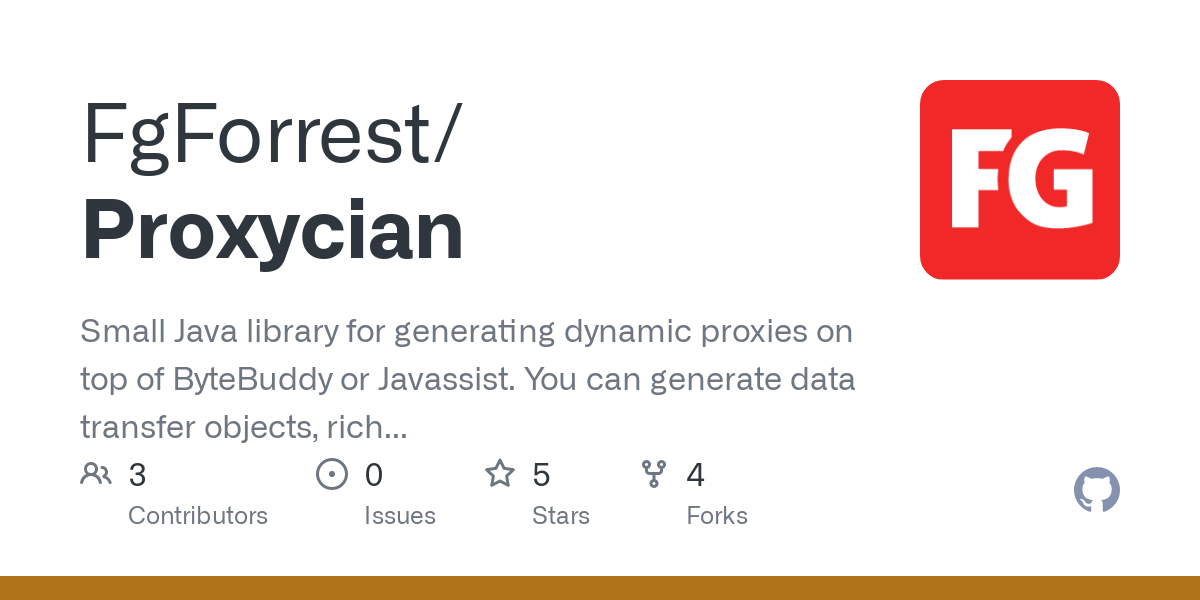
I'm happy to help you with that!
A Java proxy library is a type of software development kit (SDK) that enables the creation of proxies for existing systems, services, or interfaces. Proxies act as intermediaries between clients and servers, allowing for control, security, logging, caching, and other functionalities. Here are some key features and benefits of using a Java proxy library:
Key Features:
Interface-based programming: A Java proxy library provides a set of interfaces that define the behavior of the target system or service. Proxy generation: The library generates a proxy class for each interface, allowing you to implement the target system or service's functionality. Dynamic invocation: Proxies can be invoked dynamically, making it easier to integrate with different systems and services. Method interception: You can intercept method calls, allowing for features like logging, caching, and security validation.Benefits:
Decoupling: A Java proxy library enables loose coupling between clients and servers, making it easier to modify or replace either side without affecting the other. Extensibility: Proxies allow you to add functionality, such as security checks or caching, without modifying the original system or service.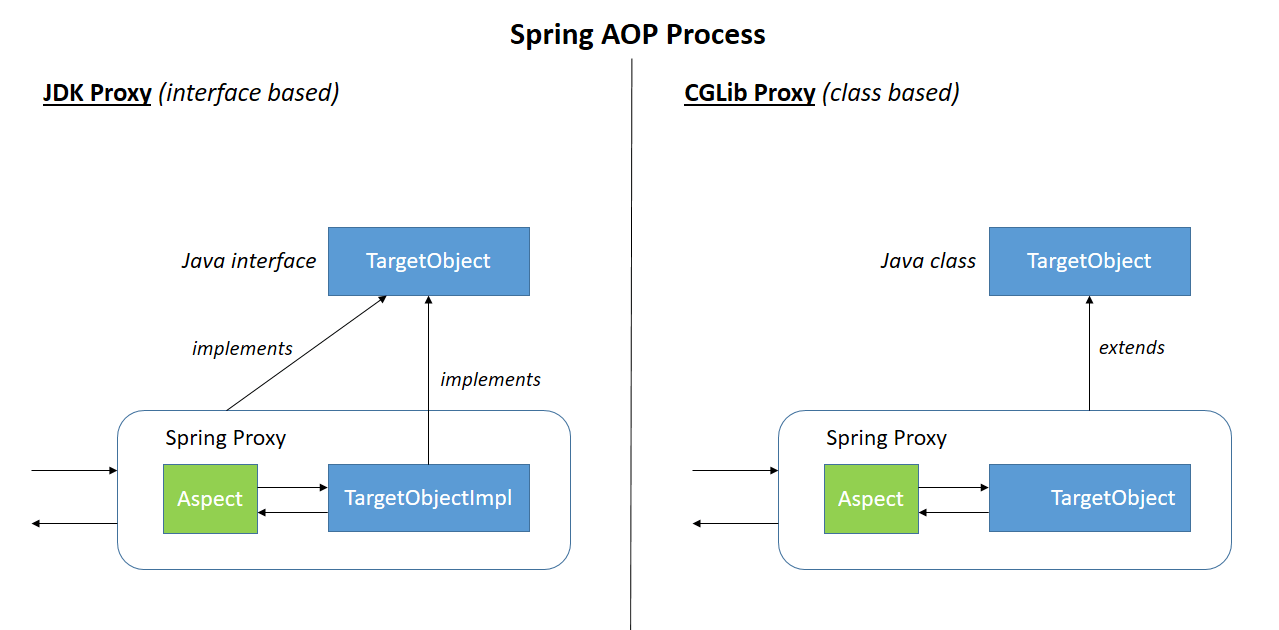
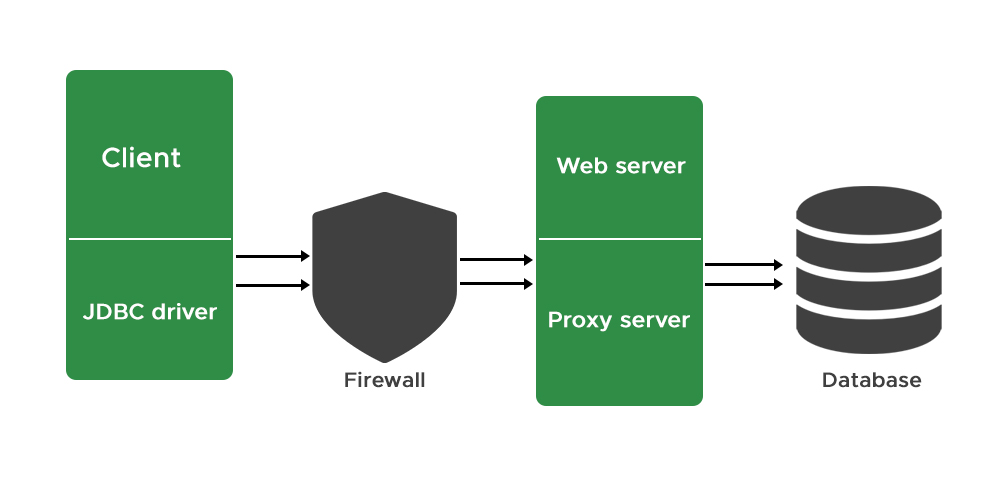
Java Proxy Libraries:
Here are some popular Java proxy libraries:
Apache Commons HttpClient: A flexible and powerful HTTP client library that provides support for proxies, authentication, and SSL/TLS encryption. JAX-WS (Java API for XML-Based Web Services): A standard Java API for developing web services using SOAP or RESTful interfaces. Spring Framework's Proxying Mechanism: A lightweight proxy mechanism built into the Spring Framework that enables dynamic invocation and interception of method calls. Dynamic Proxies (Java.lang.reflect.Proxy): A built-in Java feature that allows you to create dynamic proxies for any interface or class.When choosing a Java proxy library, consider factors like the target system's complexity, the level of control required, and the need for extensibility. Some libraries might be more suitable for specific use cases or industries than others.
In conclusion, a Java proxy library is an excellent tool for simplifying integration with existing systems and services. By providing features like interface-based programming, dynamic invocation, and method interception, these libraries enable developers to create flexible, secure, and maintainable applications.
